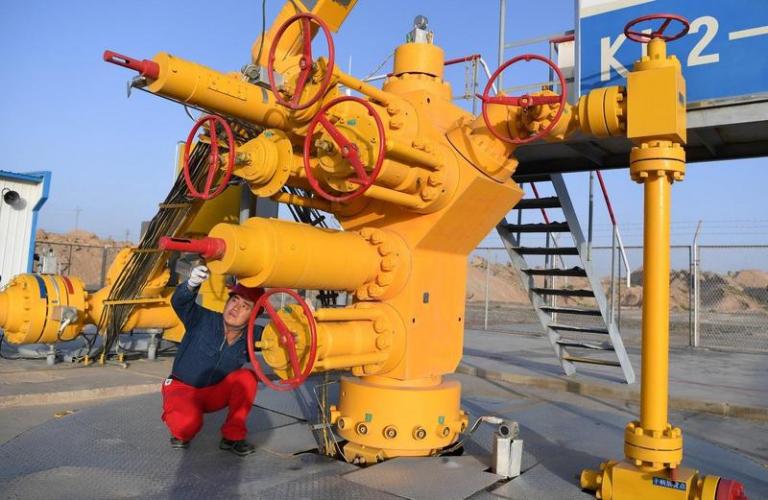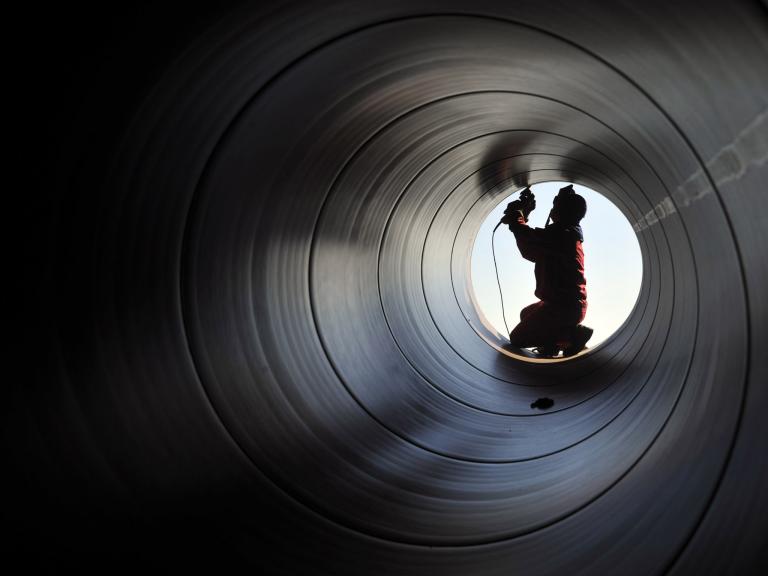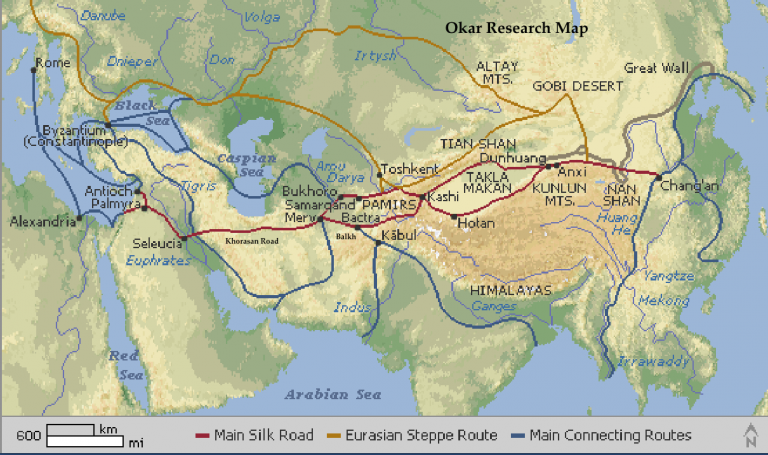West-East Natural Gas Transmission
3 min readWest-East Natural Gas Transmission means transmitting natural gas from the China’s western region to the eastern region, primarily transmitting the natural gas of Tarim Basin in Xinjiang to Yangtze River Delta region. Gas pipeline starts westward from the Lunnan Oilfield in Xinjiang Tarim and extends eastward and eventually reaches Shanghai, Hangzhou, passing through 11 provinces with a total length of 4,200km; the designed annual gas transmission capacity is 12 billion m² and the final gas transmission capacity is 20billion m³; on October 1,2004 the pipeline was completed and put into operation.

In February 2000, the first meeting of the State Council approved the launch of the “West-East Natural Gas Transmission”project, which is another ma jor investment project second only to the Three Gorges Project, is a landmark construction project for starting the western developments.
West-East Natural Gas Transmission is a pipeline in China with the longest distance, the largest pipe diameter, the largest investment, the largest gas transmission capacity and the most complex construction conditions. The whole length is controlled automatically and the gas supply covers the Central China, East China and the Yangtze River Delta region.Oil and gas pipeline starts from Lunnan oil and gas field in Tarim of Xin jiang and goes through eastward Korla, Turpan, Shanshan, Kumul, Liuyuan, Jiuquan, Zhangye, Wuwei, Lanzhou, Dingxi, Baoji, Xi’ an, Luoyang, Xinyang, Hefei, Nanjing, Changzhou, and transverses nine provinces from east to west, namely, Xinjiang, Gansu, Ningxia, Shaanxi, Shanxi, Henan, Anhui, Jiangsu, Shanghai and extends to Zhe jiang Province. This project goes through a variety of terrains and landforms such as Gobideserts, plateaus, mountains, plains and water network and various climate environments, and has to overcome the unfavorable conditions of alpine oxygen deficit, and the construction difficulty is rare in the world. First-line project of this project started in 2002 and completed in 2004; the second-line project started in 2009 and extended to Hong Kong by the end of 2012 to have achieved full completion.

The first-line project of West-East Natural Gas Transmission mainly passes through the following provincial-level administrative regions: Xinjiang-Gansu-Ningxia-Shaanxi-Shanxi-Henan-Anhui-Jiangsu-Shanghai; the second-line project mainly goes through the following main provincial-level administrative regions: Xinjiang-Gansu-Ningxia-Shaanxi-Henan-Hubei-Jiangxi-Guangdong.
The first-line project mainly passes through the following morphologic regions: Tarim Basin-Turpan Basin-Hexi Corridor-Ningxia Plain -Loess Plateau-North China Plain-Yangtze Plain; the second-line project mainly goes through the following morphologic regions: Junggar Basin-Hexi Corridor-Ningxia Plain-Loess Plateau-North China Plain-Jianghan Plain-Poyang Lake Plain-South Yangtze River-South China Hills-Pearl River Delta.
The third-line project of West-East Natural Gas Transmission goes through 10 provinces(areas), namely, Xinjiang, Gansu, Ningxia, Shaanxi, Henan, Hubei, Hunan, Jiangxi, Fujian and Guangdong. The trunk pipeline starts westward from Horgos, Xinjiang, andextends eastward to Shaoguan, Guangdong Province. According to the master plan, the whole length of the third-line project of West-East Natural Gas Transmission will be completed and start the gas transmission in 2014 when it will be combined with the first line and the second line, and will be integrated with the first line and the second line ofShaanxi-Beijing Pipelines and the gas transmission pipeline of Sichuan to Eastern Regions,to form a base gas pipeline network stretching from east to west and from north to south.
West-East Natural Gas Transmission Project will greatly speed up the economic development in Xin jiang and areas along the pipelines in the central and western China, increase the financial income and employment opportunities accordingly, and bring huge economic and social benefits. The implementation of this major project will also promote energy structure and industrial structure adjustments in China, enhance the development of steel, building materials, petrochemicals and electric power and other related industries.Cities along the pipelines can replace the fuel oil and coal used by some power plants, furnaces, chemical enterprises and residents with clean energy, which will effectively improve the atmospheric environment and improve the life quality of people.









